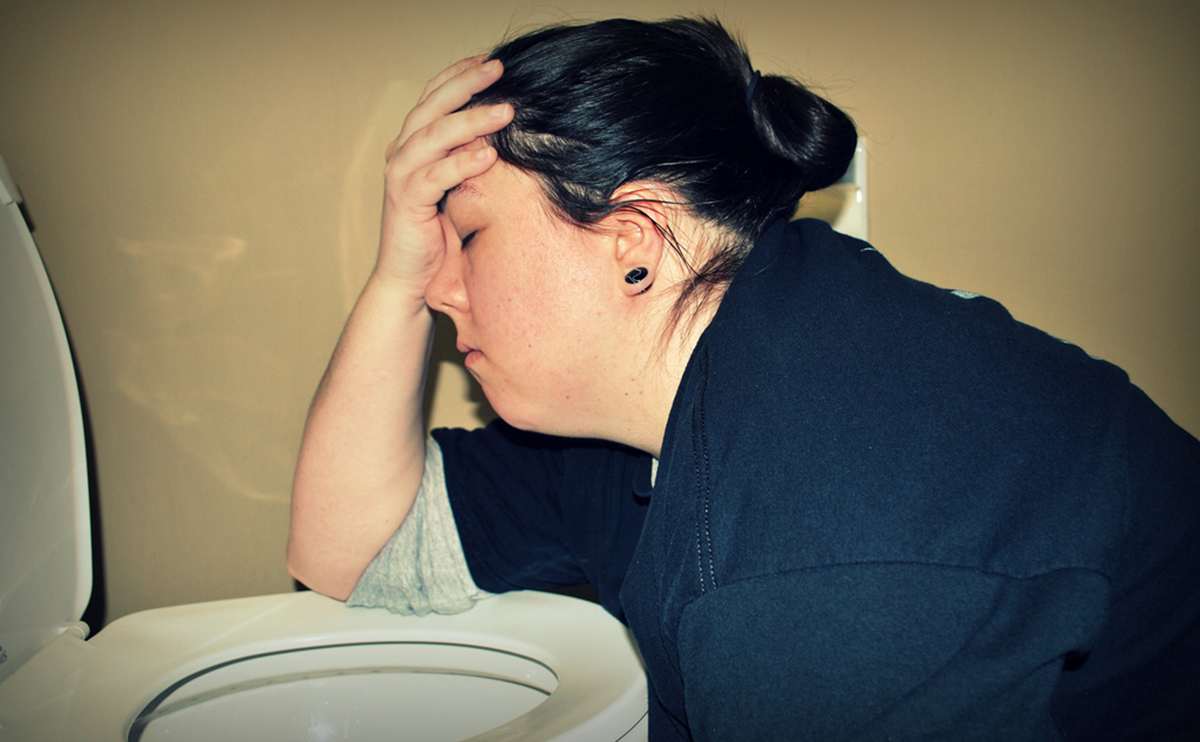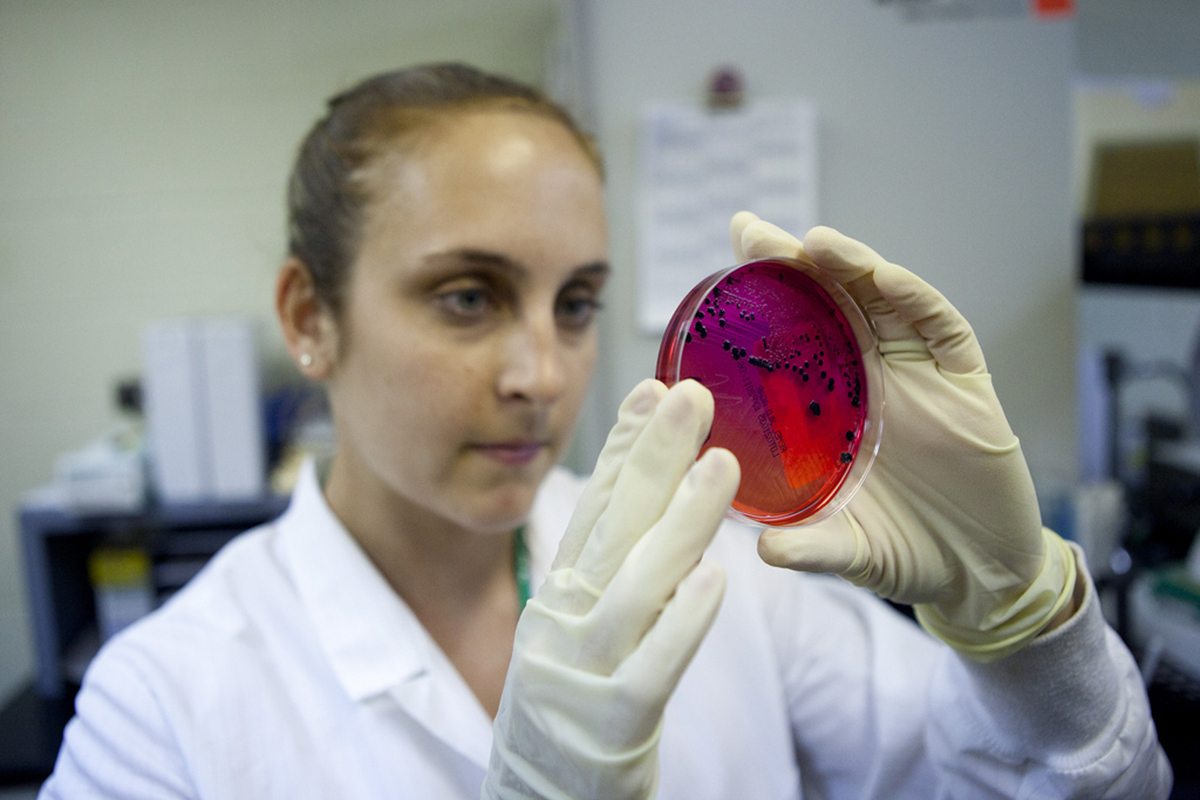Food poisoning occurs through the consumption of food or water contaminated with bacteria, viruses, toxins, or any other chemical agents. This contamination is usually caused by unsanitary cooking or handling conditions. In some cases, food poisoning presents no symptoms. However, such an infection often causes severe abdominal cramping, diarrhea, vomiting, dizziness, sweating, and muscle weakness.

Salmonella or Salmonellosis - Difference
Before we go into the details, it is necessary for you to know that what is the difference between Salmonella and Salmonellosis. It is simple;
Salmonella and Food poisoning
Several organisms are known to cause food poisoning but the most common cause of food poisoning is the bacterium Salmonella.which cause Salmonellosis.
Sources and Transmission of Salmonella
This microbe is found in raw beef, poultry, and occasionally even in unwashed vegetables and fruits. Salmonella can also gain entry into your system through the use of contaminated utensils and poor sanitary habits of your food handler. Furthermore, Salmonella may also be present in the feces of certain pets, especially if they have diarrhea. These particularly include reptiles, ducklings, and small rodents.
Symptoms of Salmonellosis
Salmonellosis causes the usual symptoms associated with food poisoning. They usually develop about 72 hours after the infection. The illness may last up to a week. People who experience only diarrhea recover rather quickly, although it may take several months for the bowel to function normally.
Some people with Salmonellosis may develop a condition known as Reiter’s syndrome. This disease can persist for months and even years, and can cause chronic arthritis as well.
The most common facts include:
- Children, young adults, and immunocompromised people (population with impaired immunity) are prone to develop the infection.
- The major complaint of the patient is diarrhea, several times a day.
- Symptoms are less likely to develop suddenly. It usually takes time.
- Raised body temperature is seen in most cases but diarrhea comes before fever.
- Salmonella is more likely to occur in the patients who live in groups or untidy crowded places. For example hostels, homeless people, disastrous areas, etc.
- Patients who own a pet are also prone to get infected by Salmonella.
On the other hand, it is less likely to be Salmonellosis if:
- Patient is of adult age group
- He is financially strong
- He is not suffering from any chronic disorder
- He has got all the vaccinations in time
- He has not traveled recently
See Also: Basic Information About Salmonella Food Poisoning
A point to remember: You cannot draw a line between the symptoms of a Salmonella infection and a non-Salmonella infection. The investigation that confirms the diagnosis is the stool test. It is not usually required in majority of the cases because treatment is mostly symptomatic in all the cases.
Despite being the most common cause, Salmonella may not be the only microbe to blame for all food poisoning infections. There are many other species of bacteria that cause similar distressful symptoms as well.
Food Poisoning May Also Be Caused By Other Bacteria
A medical history and physical exam are used to diagnose such infections. The symptoms, recently eaten foods, hygienic conditions, etc are also taken into consideration.

Confirmatory diagnosis of the bacterial species involves a stool culture and blood tests. Some other bacteria that are known to disguise Salmonella include:
1. Bacillus Species (Bacillus cereus)
Species of bacillus, in particular Bacillus cereus, are also involved in producing mild intestinal infections. These bacteria are heat resistant and can form spores in the food.
Reheating will not destroy these compounds.
Sources and Symptoms
This pathogenic bacterium usually causes two types of food-borne illnesses.
- Diarrheal type (associated with diarrhea) - This type of infection develops within 8-16 hours of ingesting contaminated food or water. It usually lasts for 24 hours. Foods such as cereals, pudding, sauces and spices are common sources of contracting such an infection.
- Emetic type (associated with vomiting) - Symptoms for this type usually appear within 30 minutes to 5 hours. Rice is the most common source of infection in this case.
2. Campylobacter
This bacterium causes food poisoning even if present in minute amounts, and is hence a significant problem.
Sources and Symptoms
Campylobacter is found in the gut of various animals, particularly birds. Infections are caused by the consumption of unpasteurized milk, undercooked foods such as poultry and contaminated meat. Pets may also be a potent cause of infection.
Symptoms are usually gastrointestinal in nature, and can take about 7 days to present. They usually last for 5 days and may include fever as well.
3. Escherichia coli (E.coli)
E.coli is a rather well-known bacterium and is naturally present in the gut of animals and humans. However, there are some rare pathogenic strains of E.coli that have been linked with outbreaks of food poisoning. The good news is that they are not very resilient and are usually destroyed by heating.
Sources and Symptoms
Various types of foods and drinks may be contaminated with disease-causing E.coli strains. These include unpasteurized juices, certain fruits, raw milk, cheese, raw or undercooked meat and meat products.
Other than the obvious diarrhea and vomiting, conditions such as Haemolytic Uraemic Syndrome (HUS) and Traveler’s Diarrhea are also caused by E.coli.
4. Clostridium perfringens
Clostridium perfringens is a lesser known bacterium which, when ingested in large amounts, can cause food poisoning. Due to its rapid growth rate, it tends to multiply and accumulate fairly quickly. Once in the gut, it forms spores and produces toxins, which cause the illness. Clostridium perfringens can also remain in food in the form of highly resilient spores, which become active under favorable conditions.
Sources and Symptoms
This bacterium is readily found in soil and in the intestinal tract of humans. It is generally present in food that remains warm for some hours.
Symptoms manifest after about 8-22 hours of infection. Severe abdominal cramping and diarrhea persist for about 24 hours. However, infections caused by Clostridium perfringens may prove to be fatal in already ill or elderly individuals.
5. Listeria monocytogenes
Listeria monocytogenes causes a rare and mild form of gastroenteritis known as Listeriosis. However, it can be severe for pregnant women, elderly individuals and people who are immune-compromised.
Sources and Symptoms
Listeria monocytogenes is abundantly present in the environment, thus raw food is usually infected. Unlike many pathogens, this bacterium can grow in refrigerated foods as well, thus ready-to-cook meals should not be stored for extended periods.
Symptoms usually appear after 8-90 days of infection. Listeriosis most commonly manifests with ‘flu-like’ symptoms. Vomiting and discoloration of the urine may also occur. Pregnant women are at a risk of miscarriage even if they exhibit no symptoms.
6. Staphylococcus aureus (Golden ‘staph’)
Staph is a bacterium that is commonly carried on the skin or in the nasal passages of many individuals. It causes infections by reproducing and secreting a heat-resistant toxin. The toxin remains in the food even if it is re-cooked or re-heated.
See Also: Don't Fall Victim To The Commonest Causes Of Food Poisoning
Sources and Symptoms
Staphylococcus aureus prefers sweet and salty foods, and thus contaminates raw milk, custards, salads, bakery products, raw meat, etc. Animals can also carry the bacterium on their bodies. Cuts and sores may also be infected with staph, and should be covered before handling food.
Symptoms of the illness develop rather rapidly in about 1-6 hours and include the usual nausea, vomiting, and diarrhea.
The crux of the matter is that all food poisonings should be treated as Salmonella infection. If the symptoms do not fade away, suspect the other microorganisms as the causative agent.
- Photo courtesy of Morgan by Flickr : www.flickr.com/photos/meddygarnet/3251224178
- Photo courtesy of News21 - National by Flickr : www.flickr.com/photos/news21/5906869960


Your thoughts on this